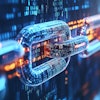
With a new year looming on the horizon, the environmental impact of widespread food waste is showing no signs of slowing down. In the United States alone, approximately 35 million tons of food is wasted annually – an alarming rate that serves as a key driver of the accelerating climate crisis afflicting every region of the country today. According to the U.S. Environmental Protection Agency, America’s food waste footprint generates 170 million greenhouse gas emissions each year, equal to the annual emissions of 42 coal-fired power plants.
Whether it’s the raging forest fires in California, the crop-killing droughts in Texas or Hurricane Ian, the reality of the climate crisis is clear: swift and immediate action is needed to reverse its trajectory in accordance with the Paris Agreement’s target of limiting global temperature increases to 1.5℃ above pre-industrial levels.
However, the ripple effects of food waste aren’t just an environmental issue. There are severe socioeconomic factors as well. The United Nations (UN) predicts that the world population will reach 9.3 billion by 2050, a meteoric rise will require global food production to increase by more than 50% from 2010 levels. Mitigating food waste can reduce the need for new food production, in turn shrinking projected deforestation, biodiversity loss, water pollution and food scarcity.
Furthermore, with record-high inflation rates increasing the potential of an economic recession, today’s consumers simply can’t afford to be throwing out one-third of the products they purchase. And considering global food prices are 34% more expensive year-over-year, there’s a strong incentive for retailers and grocers to help their customers reduce food waste that costs American families with children $1,900 per year on average. Empowering them to avoid losing money maximizes the value of their grocery spend, in turn heightening brand loyalty for the organization.
An unnecessary problem
A significant portion of U.S. food waste is unwarranted, in large part due to unregulated expiration date systems that often paint an inaccurate picture of food safety. While the “best by” and “expires on” labels used for everyday items are often intended to dictate peak quality, they also lead to the inadvertent waste of products that are entirely safe to consume. A survey conducted by the Harvard Food Law and Policy Clinic found that more than one-third of respondents usually or always throw away food after passing its date label.
The root cause has a lot to do with a lack of federal labeling regulations. According to the U.S. Food and Drug Administration, federal law doesn’t preclude the sale of food past the expiration date indicated on the label. The FDA also doesn’t require food firms to place label dates on their products, instead leaving it to the discretion of the manufacturer.
In the absence of federal labeling regulations, which one report indicated could divert nearly 400,000 tons of waste each year, food retailers and grocers need to be proactive about identifying effective measures for accurately confirming spoilage. The integrated adoption of Internet of Things (IoT) sensing-as-a-service technology that combines the power of artificial intelligence, machine learning and prescriptive analytics to actively reduce food waste and loss is a critical place to start.
A necessary solution
IoT sensing-as-a-service encompasses more than just the utilization of physical IoT sensing and monitoring devices. It’s an enhanced blueprint for traditional IoT sensing that goes far beyond simply tracking and tracing perishable food products. Through AI-enabled digital decisioning and digitalized task management, it empowers organizations to leverage advanced inventory performance data for improving their waste reduction and loss prevention efforts. Existing inside food storage equipment (assets) at each touchpoint of the food supply chain, the AI-powered IoT sensors remotely monitor temperature settings in real-time to confirm various compliance protocols are maintained. In addition, the sensors also track equipment performance, automating the detection and prediction of maintenance issues that could lead to waste.
Then, that raw physical data collected from each IoT device is integrated into a prescriptive analytics platform that provides continuous feedback loops indicating anomalous temperature excursions that could perish products. In the event of an excursion, the platform’s machine learning capabilities generate a series of simplified corrective actions for store associates to efficiently address them.
Armed with these actionable and data-driven environmental-setting insights, employees can accurately confirm products are maintained in optimal conditions without the need for a questionable food label, which enables them to avoid throwing out inventory that is otherwise safe to consume. Leveraging this real-time visibility into food quality allows retailers to ensure that products are sold before they reach peak-quality, so they stay fresh longer after being passed off to the consumer.
Now more than ever, embracing the importance of IoT sensing-as-a-solution adoption across food retail is the most effective way to mitigate the damaging effects of unnecessary food waste. All organizations, regardless of sector or size, must do their part to make the world a safer and healthier place.


















